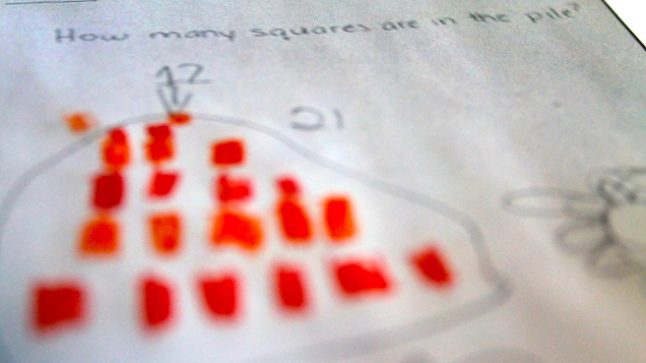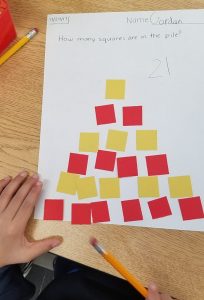Series: Ideas at Work
Exploring the Three-Reads Math Protocol for Word Problems

Teachers in four schools recently experimented with a “problem stem” protocol for helping their children understand the math going on in the word problems they face in class. This was part of our Big Shoulders project, which has been working with Chicago-area schools for the last five years.
 Using a problem stem means discussing a problem without knowing what the question is. It is often part of what is called Three Reads, which involves reading the situation/problem three times, each time with a particular focus.
Using a problem stem means discussing a problem without knowing what the question is. It is often part of what is called Three Reads, which involves reading the situation/problem three times, each time with a particular focus.
- The first time, the goal is to comprehend the text (context). So it does not involve numbers or the question itself. The teacher may ask how they would describe the situation in their own words? What do they think is the context of the story?
- The second time, the goal is to comprehend the mathematical structure of the problem. This introduces the numbers but does not pose any questions. At this point children may make a class list of possible questions, or perhaps make observations about the quantities.
- The third time, the goal is to list all the possible mathematical questions. At this point the questions are laid out and students can discuss different ways of thinking as well as perhaps create diagrams to analyze the questions that are posed.
Many of the teachers read Beyond Answers by Mike Flynn as well as used the 3-act lesson resources posted by Graham Fletcher on his website gfletchy.com.
 Two teachers at St. Thomas the Apostle tried the Three Reads strategy in their first grade classrooms using a math story and a series of engaging photographs they created. They read the situation three times, after each time stopping to discuss with students or allowing a turn-and-talk amongst themselves. Their particular story involved elves because it was leading up to the holidays, but that could be substituted for a thousand different thematic characters or objects.
Two teachers at St. Thomas the Apostle tried the Three Reads strategy in their first grade classrooms using a math story and a series of engaging photographs they created. They read the situation three times, after each time stopping to discuss with students or allowing a turn-and-talk amongst themselves. Their particular story involved elves because it was leading up to the holidays, but that could be substituted for a thousand different thematic characters or objects.
Read 1: “There were some elves at St. Thomas the Apostle. There were some elves at Maggie Daley Park and there were some elves at the zoo.”
Read 2: “There were 15 elves in Chicago. 4 elves were at St. Thomas the Apostle. 7 elves were at Maggie Daley Park and the rest of the elves were at the zoo.”
Read 3: “There were 15 elves in Chicago. 4 elves were at St. Thomas the Apostle. 7 were elves at Maggie Daley Park and the rest of the elves were at the zoo. How many elves were at the zoo?”
Another teacher that is part of the project at St. Terese used the 3-Act problem Counting Squares to explore pattern and numbers. After being shown a picture of the pile, the kindergarten class discussed the situation and what questions may be posed about it. Students then used different approaches to solving the problem: How many tiles are in the pile. After working on solutions, the class came back together to discuss how making a pattern helped them answer the question to how many tiles were in the pile. An extension to the problem was if there was one more row added to the bottom, how many tiles would be in that row and what color would they be.
More Resources on the Three-Reads Protocol:
- The 3-Read Protocol – SFUSD Mathematics Department
- Strategy Showcase: 3 Reads – Mister, Is This Right? Blog

Launch Problem Solving with Understanding Using Three Reads
In this lesson launch, we see a third-grade teacher using reading comprehension strategies to help children understand a math story problem using Three Reads.